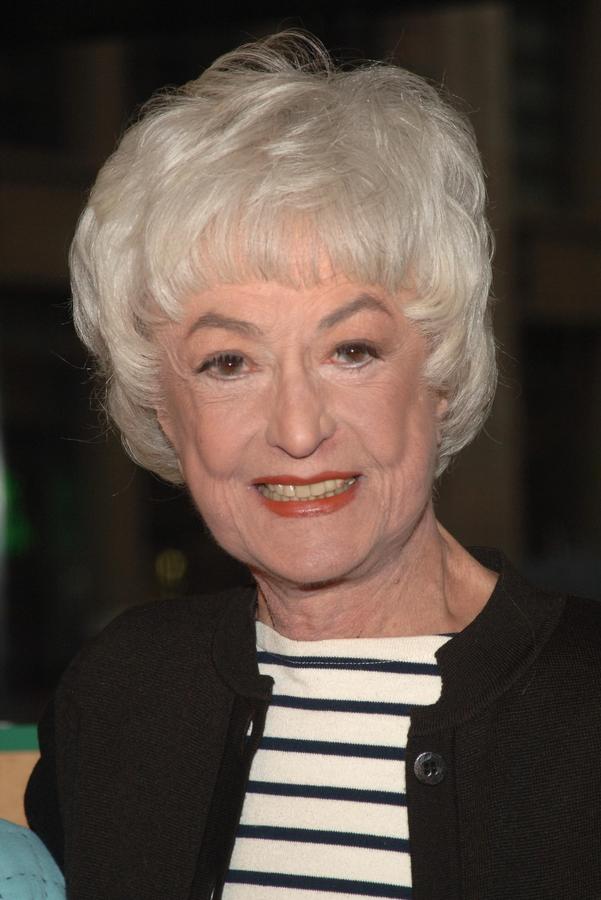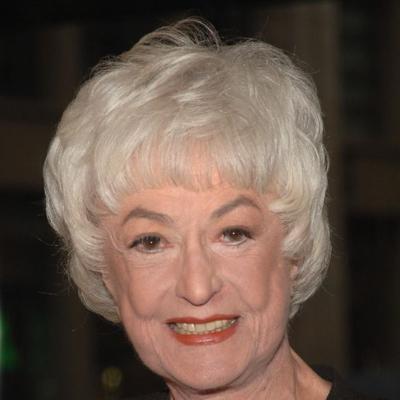Bea Arthur at a Glance
- Categories: Celebrities > Actors, Celebrities
- Net Worth: $25 Million
- Birthdate: May 13, 1922 - Apr 25, 2009 (86 years old)
- Birthplace: New York City
- Gender: Female
- Profession: Actor, Comedian, Singer
- Nationality: United States of America
- Height: 5 ft 9 in (1.77 m)
Bea Arthur: From Stage Icon to Television Legend – A Deep Dive
What Was Bea Arthur’s Net Worth?
Bea Arthur, the beloved American actress, comedienne, and singer, left behind a legacy as rich as her acting career. At the time of her passing in 2009, her net worth was estimated at a remarkable $25 million. While she enjoyed a prolific career in both film and television, she remains most famous for her iconic role in the sitcom “The Golden Girls.” This show solidified her status as a television legend. Arthur starred in a total of 177 episodes of “The Golden Girls,” which aired from 1985 to 1992. In this role, she played Dorothy Zbornak, the sharp-witted, sarcastic, and ultimately loving matriarch of a group of four women living together in Miami. She starred alongside Betty White, Rue McClanahan, and Estelle Getty. The chemistry and comedic timing among the four actresses contributed to the show’s enduring popularity and its place in television history.
Arthur was renowned for portraying strong, independent, and intelligent women. These characters were often characterized by a thirst for knowledge and a dedication to their own principles. Her commitment to playing such roles made her a role model for many. Arthur’s journey from the stage to the small screen captured the attention of audiences and critics alike. She went on to play two iconic characters in some of television’s most highly-rated, critically acclaimed, and, at times, controversial series. Her performances garnered her numerous awards throughout her extensive career. She was nominated for Primetime Emmy Awards a significant number of times, placing her among the most-nominated actresses in history. Arthur also took on the role of hosting Hollywood tributes and award shows, further showcasing her versatility and star power. A twice-divorced mother of two, she was an active supporter of LGBTQ rights and feminist causes, reflecting her personal values in both her public and private life. Her death in 2009, due to lung cancer, marked the end of an era for many television viewers.
Early Life and Beginnings
Born Bernice Frankel on May 13, 1922, in Brooklyn, New York, Bea Arthur was the middle child of three girls. Her parents, Rebecca and Philip Frankel, provided a supportive and loving environment. At the age of 11, her family relocated to Cambridge, Maryland, where her parents eventually opened a clothing store. This move introduced her to a new environment, shaping her early experiences. During her childhood, Arthur suffered from Coagulopathy, a condition that affects the blood’s ability to clot properly. This medical condition would have required special attention and care throughout her formative years.
Arthur’s educational journey included attending an all-girls high school located in the Amish community of Lititz, Pennsylvania. She then pursued higher education at Blackwood College in Virginia for a year. These experiences helped broaden her horizons and fueled her personal development. During World War II, Arthur served in the United States Marine Corps Women’s Reserve. She enlisted in 1943, becoming one of the first women to serve in the Marines. She completed her full two-year service term. Following her basic training, she worked as a truck driver and dispatcher at Cherry Point, North Carolina. This period of service showcased her commitment to her country and her willingness to challenge traditional gender roles.
In 1947, Arthur took acting classes at the prestigious New School in New York City. It was there that she met Robert Alan Aurthur, a fellow Marine. He would later become her first husband. Aurthur was a successful screenwriter and director. They married from 1947 to 1950. During her marriage, she adjusted the spelling of her last name to “Arthur” and kept this version for the rest of her career. She later married theater director Gene Saks. These unions and associations with successful artists were essential in shaping her life and career.
Bea Arthur’s Illustrious Stage Career
Like many of her contemporaries, Arthur began her career in live theater. She joined the Cherry Lane Theater, an Off-Broadway repertory company, where she honed her acting skills. She initially played primarily small roles, gaining experience and recognition within the company. These early roles were essential in her journey to become an accomplished actress.
In 1966, when her then-husband Gene Saks was preparing to direct the Broadway production of “Mame,” Arthur auditioned for the titular role. However, Broadway veteran Angela Lansbury was cast in the lead. Arthur secured the role of Vera Charles, Mame’s boozy, witty, and loyal best friend. This role became a pivotal moment in her career.
The part of Vera Charles was a perfect fit for her unique style and comedic talent. Arthur’s performance earned her a Tony Award, solidifying her status on Broadway and opening doors for further opportunities in both theater and television. Her success in “Mame” catapulted her into a more prominent position in the entertainment industry.
Television Breakthrough: Maude and The Golden Girls
The 1970s marked a significant shift in television roles for women. Shows like “The Mary Tyler Moore Show” achieved massive success, and feminism began to be addressed more seriously, often championed by activists like Gloria Steinem.
The character of Archie Bunker on Norman Lear’s series, “All in the Family,” was a bigoted and sexist individual who strongly believed in traditional gender roles. His wife, Edith Bunker, was a nervous and complacent housewife. Arthur made a guest appearance on the show as Edith’s cousin Maude, a conscious and militant feminist. The character’s strength and outspokenness were a hit with the audience. Executives at CBS were very impressed with the overwhelmingly positive response to Arthur’s portrayal and the character of Maude. They decided to give Maude her own series.
The spin-off, simply titled “Maude,” debuted in 1971. Arthur’s character lived in Westchester County, New York. Maude was a thrice-divorced housewife and a real estate agent whose husband, Walter Findlay, was an alcoholic. The show pushed boundaries and tackled controversial topics.
Maude became a feminist icon in television history. She was a powerful figure who frequently took charge in her relationship with her husband. Her tall stature, raspy voice, and broad shoulders often led to her being mistaken for a man. This was a testament to her strong presence and personality.
Like many of Norman Lear’s sitcoms, “Maude” tackled serious political and social issues. It addressed topics such as mental illness, gay rights, and women’s liberation. Maude was known for being politically outspoken. The character would eventually even be elected as a congresswoman in one storyline.

(Photo by Brad Barket/Getty Images)
In 1972, just months before the Supreme Court’s landmark Roe vs. Wade decision, “Maude” aired one of the most controversial episodes in television history. The two-part episode, “Maude’s Dilemma,” centered around Arthur’s character discovering that she was pregnant at middle age. The decision to tackle such a sensitive issue was groundbreaking.
Although Maude was married, educated, and financially secure, she decided to have an abortion, a highly debated topic at the time. Abortion was legal in New York, where the character lived, but not in every state across America. Despite several network affiliates refusing to air the episode, it drew a massive audience of 65 million viewers. The episode sparked intense public discourse and further cemented Arthur’s reputation for tackling difficult and important subjects.
The series ended in 1978 when Arthur felt the character had run its course. Over the next seven years, she participated in various other projects, but she didn’t get her next big break until 1985. That year, she was cast as Dorothy Zbornak in the series, “The Golden Girls.”
Dorothy was an opinionated substitute school teacher. She lived with three other women: her mother, an aging debutante, and a slow-witted innocent from Minnesota. The show tackled issues such as menopause, financial difficulties, and romantic problems. Just like “Maude”, “The Golden Girls” is considered a television classic and remains in syndication today.
Activism, Personal Life, and Legacy
Although she never gave birth to any children, Bea Arthur adopted two sons with her second husband, Gene Saks. This demonstrates her commitment to family, even if it did not fit conventional norms. She divorced Saks in 1978. Her personal life and professional life were marked by unconventional choices.
Arthur was a lifelong Democrat and was especially passionate about the issues of animal rights and gay rights. This showed her commitment to fighting for the rights of the marginalized. She was very popular with gay men and became an icon of the LGBTQ+ community. When she died in 2009, she left an endowment to the Ali Forney Center, an organization dedicated to helping homeless LGBT youth in New York City. This generous donation helped the center open an 18-bed shelter. Her commitment to these causes and her willingness to use her platform for good cemented her legacy.
Real Estate Ventures
In the 1970s, Bea Arthur purchased a 7,000 square-foot mansion located on 3.7-acres in the prestigious Brentwood neighborhood of Los Angeles. While the exact amount she paid was not disclosed, it was a significant investment in real estate. She later undertook extensive renovations to the home in the mid-2000s, further enhancing the property. Following her death, her heirs rented the home for a substantial amount, ranging from $30,000 to $60,000 per month, reflecting the property’s value and desirability. In 2015, the heirs listed the home for sale at $16 million. They ultimately accepted an offer of $15 million a few months later. The buyers were the married mega film producers Kathleen Kennedy and Frank Marshall.
Conclusion
Bea Arthur’s legacy is a testament to her talent, her dedication, and her commitment to making a difference. Her career spanned from the stage to television, and she consistently chose roles that were strong, independent, and often ahead of their time. Whether it was her portrayal of Vera Charles in “Mame,” or her iconic roles in “Maude” and “The Golden Girls,” Arthur left an indelible mark on the entertainment industry and on the hearts of millions of fans. Her activism, personal life, and real estate ventures all contributed to her complex and compelling story. Bea Arthur’s influence is still felt today, making her one of the most beloved and respected figures in television history.

